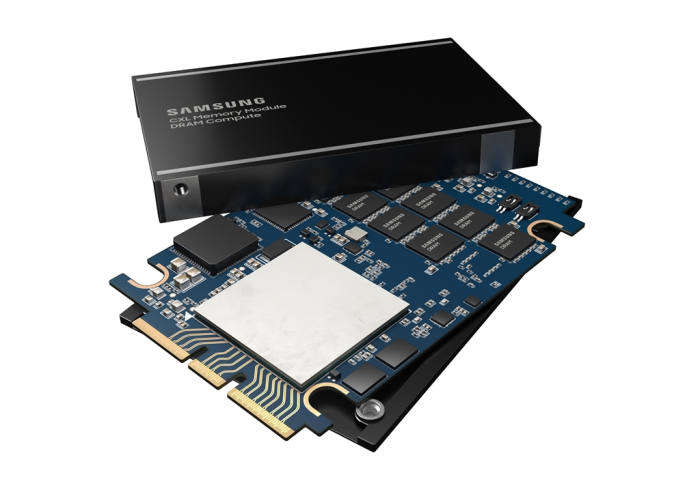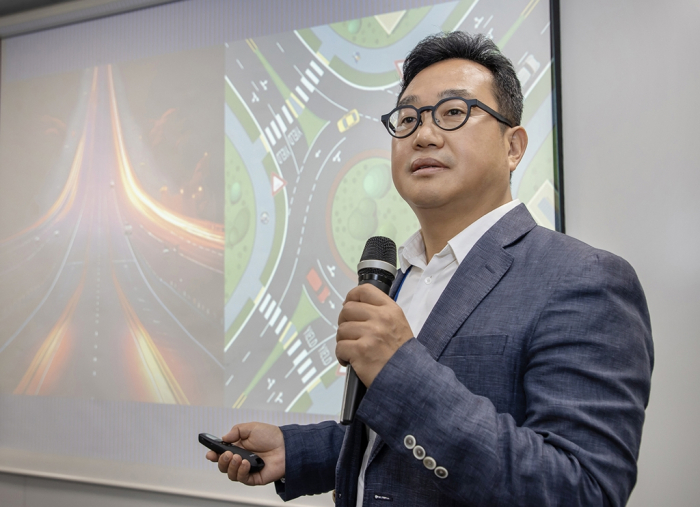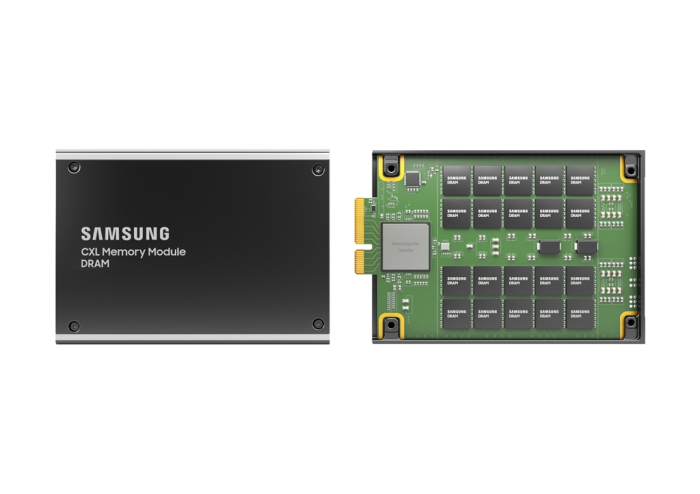Korean chipmakers
Samsung sets sights on next-generation memory CXL DRAM
It pins high hopes on its CXL products, emerging as game changers in the AI and machine-learning era
By Jul 18, 2024 (Gmt+09:00)
2
Min read
Most Read
Samsung steps up AR race with advanced microdisplay for smart glasses


When in S. Korea, it’s a ritual: Foreigners make stops at CU, GS25, 7-Eleven


Maybe Happy Ending: A robot love story that rewrote Broadway playbook


NPS yet to schedule external manager selection; PE firms’ fundraising woes deepen


US auto parts tariffs take effect; Korea avoids heavy hit



South Korean tech giant Samsung Electronics Co. is setting its sights on next-generation memory technology, dubbed CXL, to lead the artificial intelligence era.
“We plan to mass-produce 256 GB DRAM supporting CXL 2.0 within this year. We expect the CXL market to start blooming in the second half and explosively grow from 2028,” said Jangseok Choi, vice president of the new business planning team at Samsung, during a media briefing on Thursday.
CXL, short for computer express link, is a next-generation unified interface that adds efficiency to accelerators, DRAM and storage devices used with CPUs and GPUs in high-performance server systems.
Its demand is expected to multiply in the era of AI computing and machine learning, which require massive data processing. CXL can expand memory capacity and bandwidth well beyond what is currently possible.

Simply put, CXL technology “expands the highway linking the CPU and memory chips from two to three lanes to more than eight lanes,” said a Samsung official.
10-FOLD INCREASE IN MEMORY CAPACITY
With the technology, he said the memory capacity per server increases by eight to 10 times.
“Samsung has been working to develop and mass-produce high-quality CXL for more than a decade,” Choi said. “We are testing our products with our partners for performance verification.”
Samsung developed the industry’s first CXL-based DRAM in May 2021 and unveiled a mega-capacity 512 gigabyte (GB) CXL DRAM chip in 2022, also the world’s first.

In May 2023, the company developed a 128 GB CXL DRAM supporting CXL 2.0 technology and filed applications for four CXL trademarks in December to commercialize CXL memory.
Earlier this year, it unveiled a CXL 2.0-supportive 256 GB CMM-D product.
According to market tracker Yole Intelligence, the global CXL market is forecast to grow from $1.7 million in 2022 to $15 billion by 2028.

RED HAT-CERTIFIED CXL INFRASTRUCTURE
Last month, Samsung set up the industry’s first CXL infrastructure, certified by Red Hat Inc., a US Linux-based open-source and software developer, enabling speedy CXL product development and tailored product supply to customers.
In 2019, Samsung formed a CXL consortium with global tech giants such as Nvidia, Google, AMD, Arm, Intel and IBM.
“As the only memory maker on the CXL consortium board, Samsung is committed to further expanding the CXL ecosystem through partnerships with data centers, servers and chipset companies across the industry,” said Choi.
Samsung’s rivals are also ramping up efforts to advance their CXL technologies.

Last October, SK Hynix Inc. showcased its CXL products at a tech seminar, including a CXL-based computational memory solution (CMS) 2.0, which uses near-memory processing (NMP) architecture to address CPU memory bottlenecks and improve processing performance.
The chipmaker collaborated with software provider MemVerge Inc. to demonstrate its CXL-based pooled memory solution, which significantly reduces idle memory usage and shortens the overhead time of data movement in AI and big data environments.
Micron Technology Inc. unveiled its CXL 2.0 memory module last August.
Write to Chae-Yeon Kim at why29@hankyung.com
In-Soo Nam edited this article.
More to Read
-
 Korean chipmakersSamsung Electronics builds Red Hat-certified CXL infrastructure
Korean chipmakersSamsung Electronics builds Red Hat-certified CXL infrastructureJun 25, 2024 (Gmt+09:00)
2 Min read -
 Korean chipmakersSamsung, SK Hynix join forces with foreign rivals to win AI chip war
Korean chipmakersSamsung, SK Hynix join forces with foreign rivals to win AI chip warDec 31, 2023 (Gmt+09:00)
4 Min read -
 Korean chipmakersSamsung Elec moves a step closer to CXL commercialization
Korean chipmakersSamsung Elec moves a step closer to CXL commercializationDec 27, 2023 (Gmt+09:00)
3 Min read -
 Korean chipmakersSK Hynix showcases cutting-edge CXL, AiM memory at OCP Summit
Korean chipmakersSK Hynix showcases cutting-edge CXL, AiM memory at OCP SummitOct 20, 2023 (Gmt+09:00)
2 Min read
Comment 0
LOG IN


